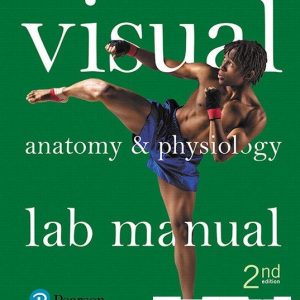This is completed downloadable of Test Bank for Introduction to Research in Education, 9th Edition

Product Details:
ISBN 13: 978-1133596745
Author:
Become a more competent consumer and producer of research with INTRODUCTION TO RESEARCH IN EDUCATION, 9th Edition! Known for its exceptionally clear writing style and comprehensive coverage, this research methods guide helps you master the basic competencies necessary to understand and evaluate the research of others. The authors familiarize you with common research problems in a step-by-step manner through examples that clarify complex concepts, supported by strong end-of-chapter exercises. This book is a must-read for anyone planning to conduct research or interpret the research of others.
Table of Content:
- Ch 1: The Nature of Scientific Inquiry
- Instructional Objectives
- Sources of Knowledge
- Other Aspects of Science
- The Nature of Research
- Summary
- Ch 2: Research Approaches in Education
- Instructional Objectives
- Quantitative Research
- Qualitative Research
- Similarities across Quantitative and Qualitative Research
- Typical Stages in Research
- Questions That Educational Researchers Ask
- Basic and Applied Research
- Language of Research
- Summary
- Part Two: Research Background
- Ch 3: The Research Problem
- Instructional Objectives
- Sources of Problems
- Evaluating the Problem
- Stating the Research Problem
- Identifying Population and Variables
- Summary
- Ch 4: Reviewing the Literature
- Instructional Objectives
- The Role of Related Literature in Quantitative Research
- The Role of Related Literature in Qualitative and Mixed Methods Research
- Efficient Location of Related Literature
- The Necessity of Mastering Online Database Searching
- Free Resources on the Internet
- Organizing the Related Literature
- Summary
- Ch 5: The Hypothesis in Quantitative Research
- Instructional Objectives
- Purposes of the Hypothesis in Quantitative Research
- Suggestions for Deriving Hypotheses
- Characteristics of a Usable Hypothesis
- Types of Hypotheses
- Testing the Hypothesis
- The Quantitative Research Plan
- Summary
- Part Three: Statistical Analysis
- Ch 6: Descriptive Statistics
- Instructional Objectives
- Scales of Measurement
- Organizing Research Data
- Measures of Central Tendency
- Measures of Variability
- Measures of Relative Position
- The Normal Curve
- Correlation
- Effect Size
- Meta-Analysis
- Summary
- Ch 7: Sampling and Inferential Statistics
- Instructional Objectives
- Sampling
- The Strategy of Inferential Statistics
- The General Strategy of Statistical Tests
- Summary
- Part Four: Fundamentals of Measurement
- Ch 8: Tools of Research
- Instructional Objectives
- Measurement in Quantitative Research
- Tests
- Testing and Technology
- Measures of Personality
- Scales
- Direct Observation
- Measurement in Qualitative Research
- Summary
- Ch 9: Validity and Reliability
- Instructional Objectives
- Validity
- Reliability
- Validity and Reliability Compared
- Summary
- Part Five: Research Methods
- Ch 10: Experimental Research
- Instructional Objectives
- Characteristics of Experimental Research
- Experimental Comparison
- Experimental Design
- Validity of Research Designs
- Dealing with Threats to Internal Validity
- Statistical Conclusion Validity
- Construct Validity of Experiments
- External Validity of Experimental Designs
- Relationships among the Types of Validity
- Summary
- Ch 11: Experimental Research Designs
- Instructional Objectives
- Classifying Experimental Designs
- Summary
- Ch 12: Ex Post Facto Research
- Instructional Objectives
- Planning an Ex Post Facto Research Study
- Partial Control in Ex Post Facto Research
- The Role of Ex Post Facto Research
- Summary
- Ch 13: Correlational Research
- Instructional Objectives
- Uses of Correlational Research
- Design of Correlational Studies
- Correlation Coefficients
- Considerations for Interpreting a Correlation Coefficient
- Factor Analysis
- Other Complex Correlational Procedures
- Summary
- Ch 14: Survey Research
- Instructional Objectives
- Types of Surveys
- Survey Technique
- Standard Error of the Sampling Proportion
- Constructing the Instrument
- Using a Mailed Questionnaire
- Maximizing Response Rates
- Validity
- Reliability
- Statistical Analysis in Surveys
- Summary
- Ch 15: Defining and Designing Qualitative Research
- Instructional Objectives
- Distinguishing Qualitative Inquiry from Quantitative Inquiry
- Major Characteristics of Qualitative Research
- Designing Qualitative Research
- Ethical Considerations in Qualitative Research
- Summary
- Ch 16: Types of Qualitative Research
- Instructional Objectives
- Qualitative Taxonomies
- Basic Qualitative Studies
- Case Studies
- Content Analysis
- Ethnographic Studies
- Grounded Theory Studies
- Historical Studies
- Narrative Research
- Phenomenological Research
- Other Types of Qualitative Research
- Summary
- Ch 17: Analyzing and Reporting Qualitative Research
- Instructional Objectives
- Analyzing Qualitative Data
- Reporting Qualitative Research
- Technology in Qualitative Analysis
- Rigor in Qualitative Research
- Evaluating Qualitative Reports
- Summary
- Ch 18: Action Research
- Instructional Objectives
- Defining Action Research
- The Action Research Process
- Action Research Problems
- Data Collection for Action Research
- Rigor and Ethical Treatment in Action Research
- Data Analysis in Action Research
- Data Interpretation in Action Research
- Action Plan
- Reporting Action Research
- Increasing Use of Action Research in Education
- Resources for More Information
- Action Research Example
- Summary
- Ch 19: Mixed Methods Research
- Instructional Objectives
- Defining Mixed Methods Research
- Mixed Methods Designs
- Data Analysis in Mixed Methods Research
- Sampling in Mixed Designs
- Rigor in Mixed Designs
- Strengths and Weaknesses of Mixed Methods Research
- Summary
- Part Six: Communicating Research
- Ch 20: Guidelines for Writing Research Proposals
- Instructional Objectives
- Writing a Research Proposal
- Quantitative Research Proposal
- Qualitative Research Proposal
- Ethical and Legal Considerations
- Summary
- Ch 21: Interpreting and Reporting Results of Quantitative Research
- Instructional Objectives
- Writing the Final Report
- Checklist for Evaluating Quantitative Research Reports
- Style Manuals
- Summary
- Appendix
- Glossary
- Index





